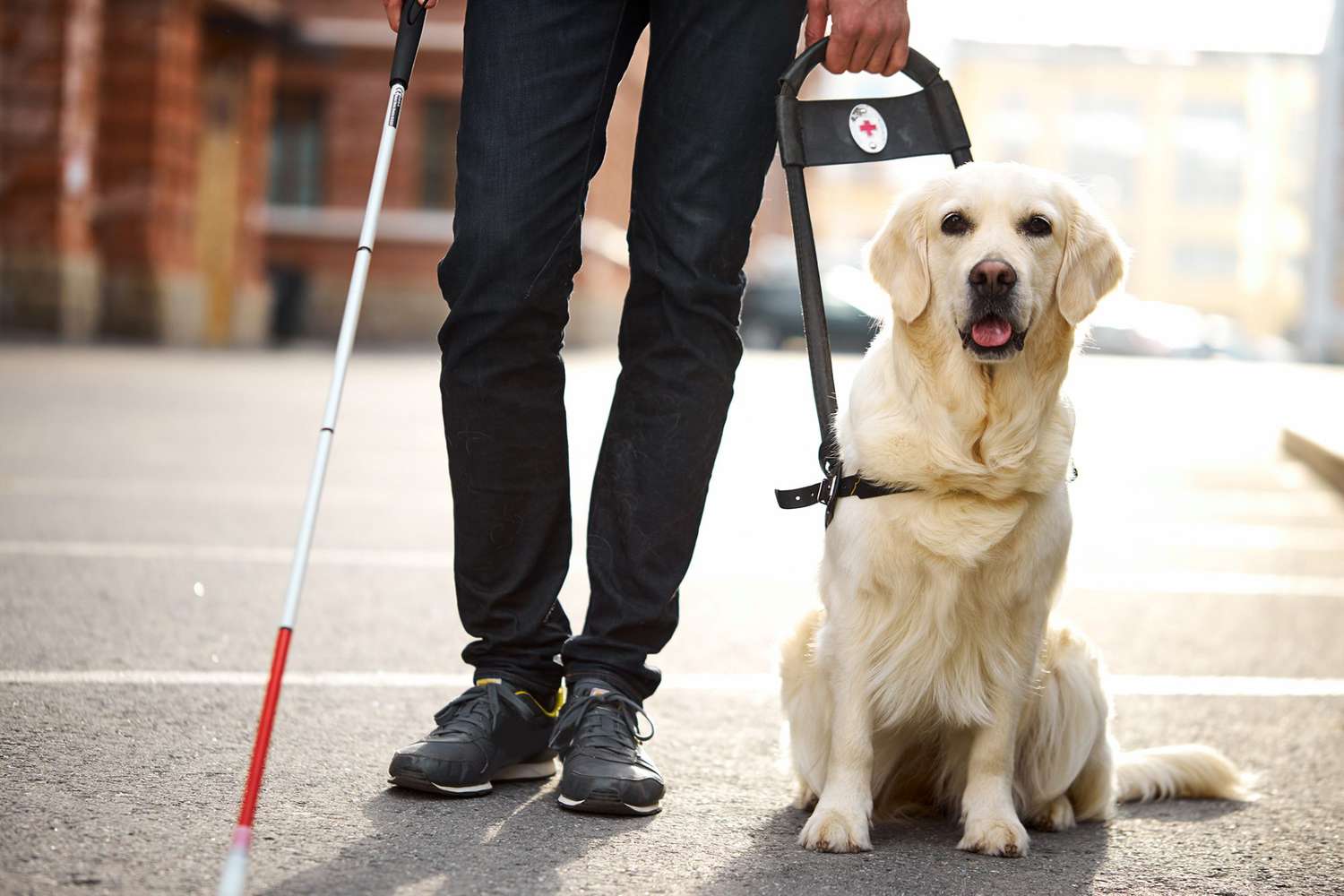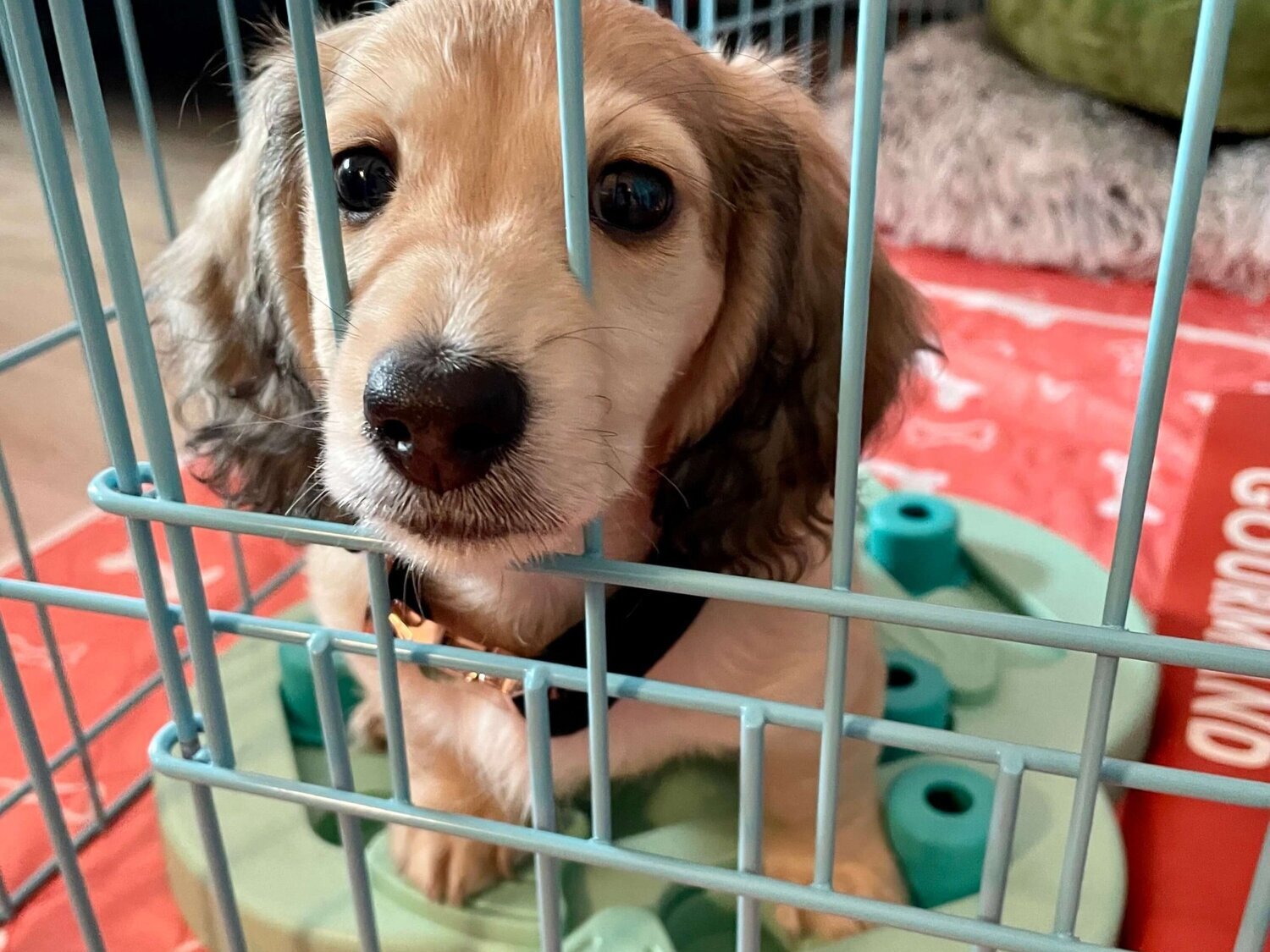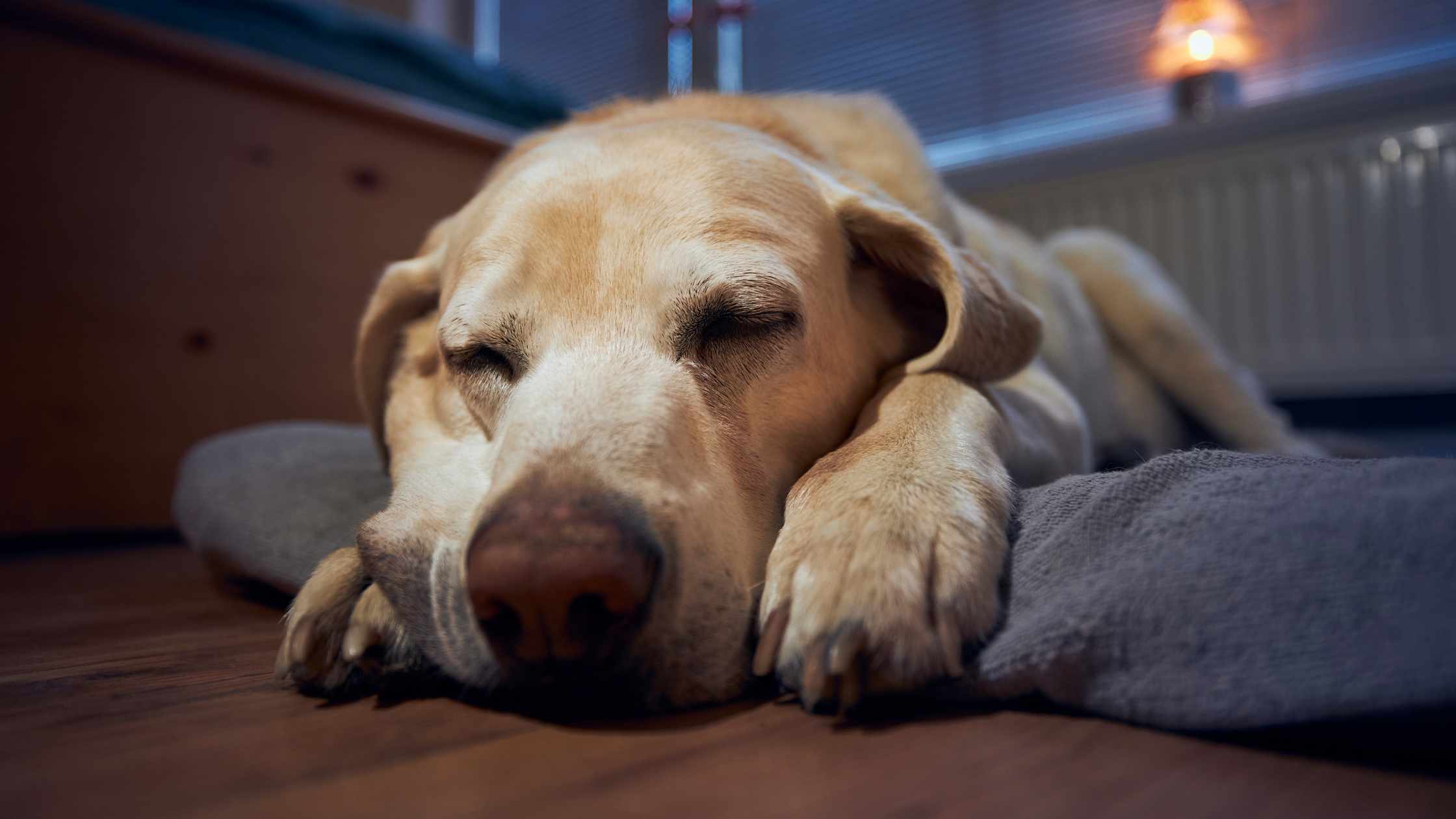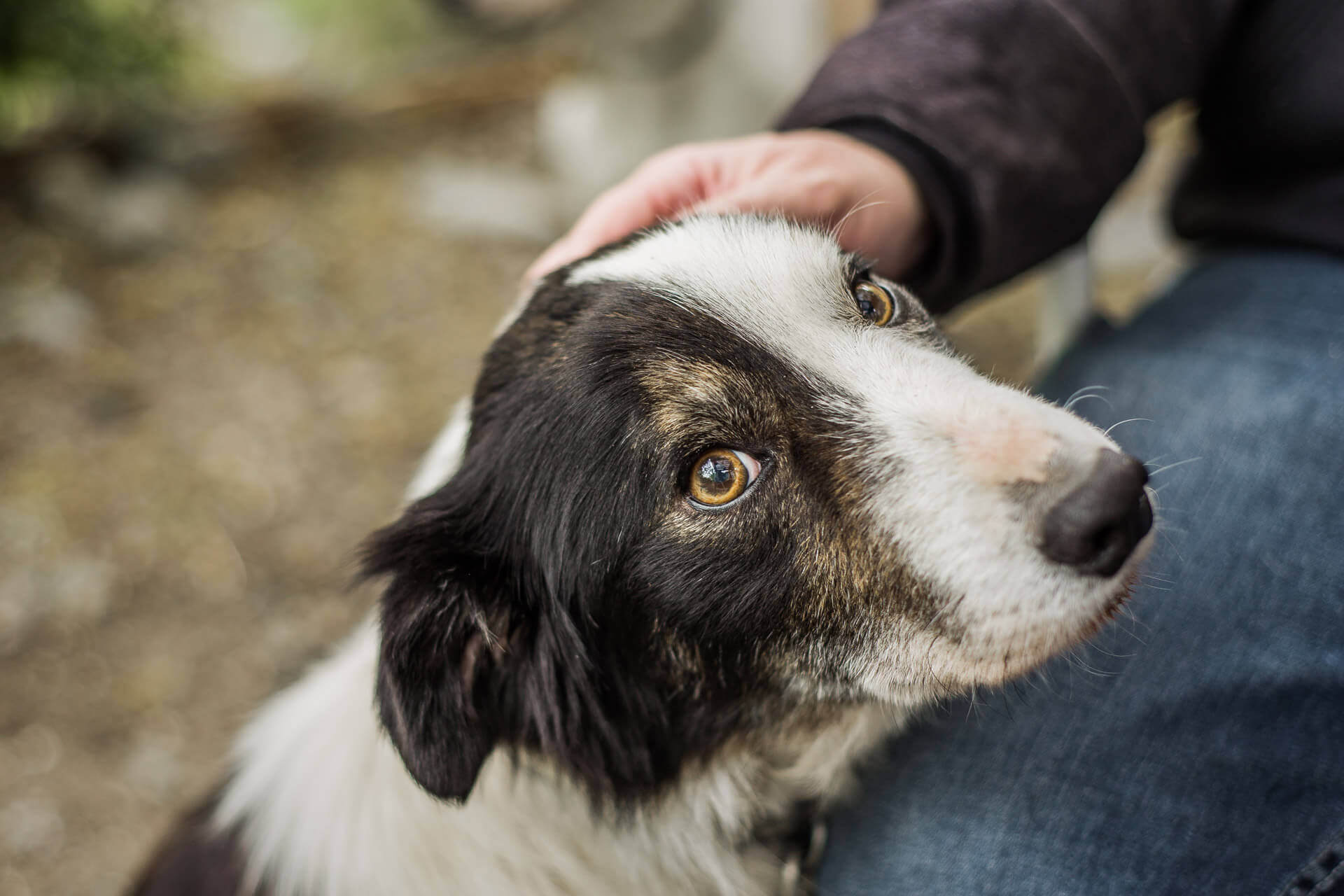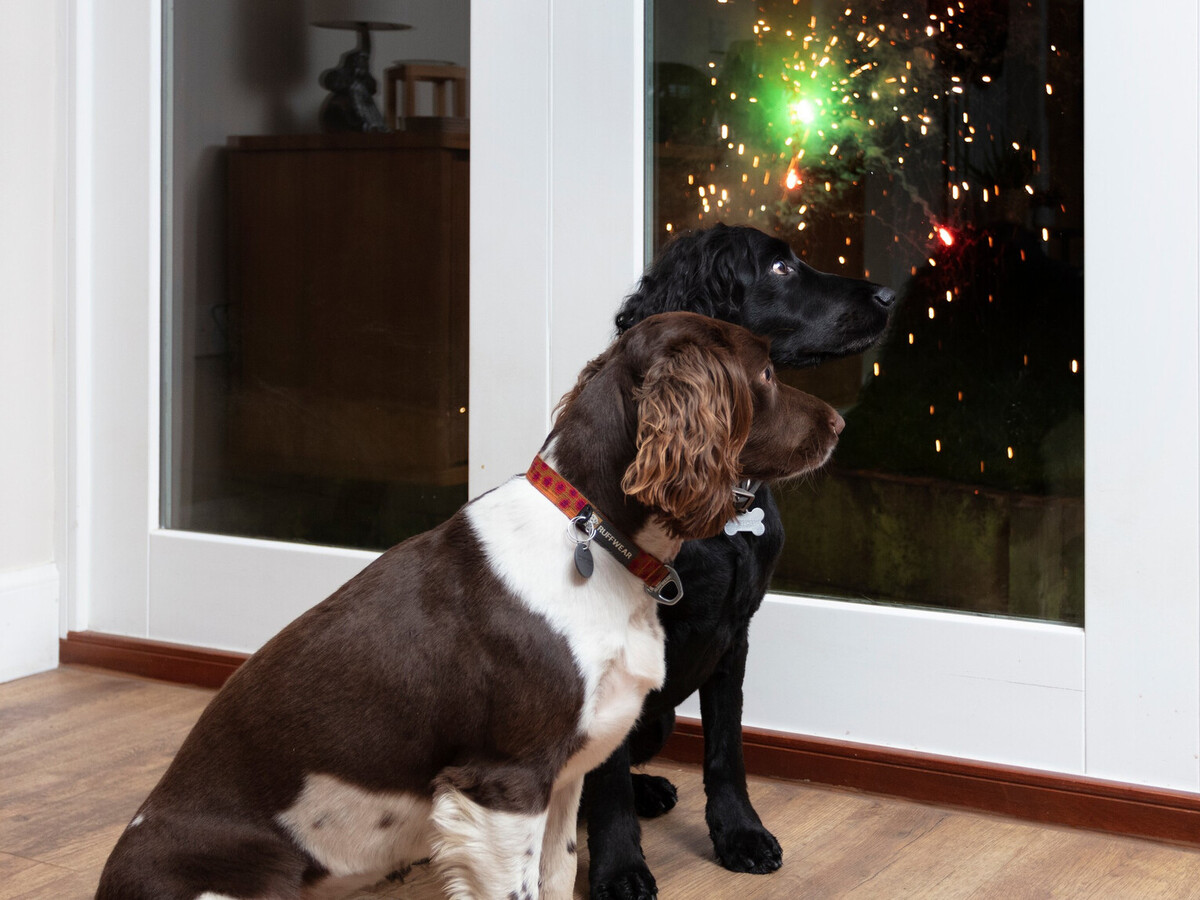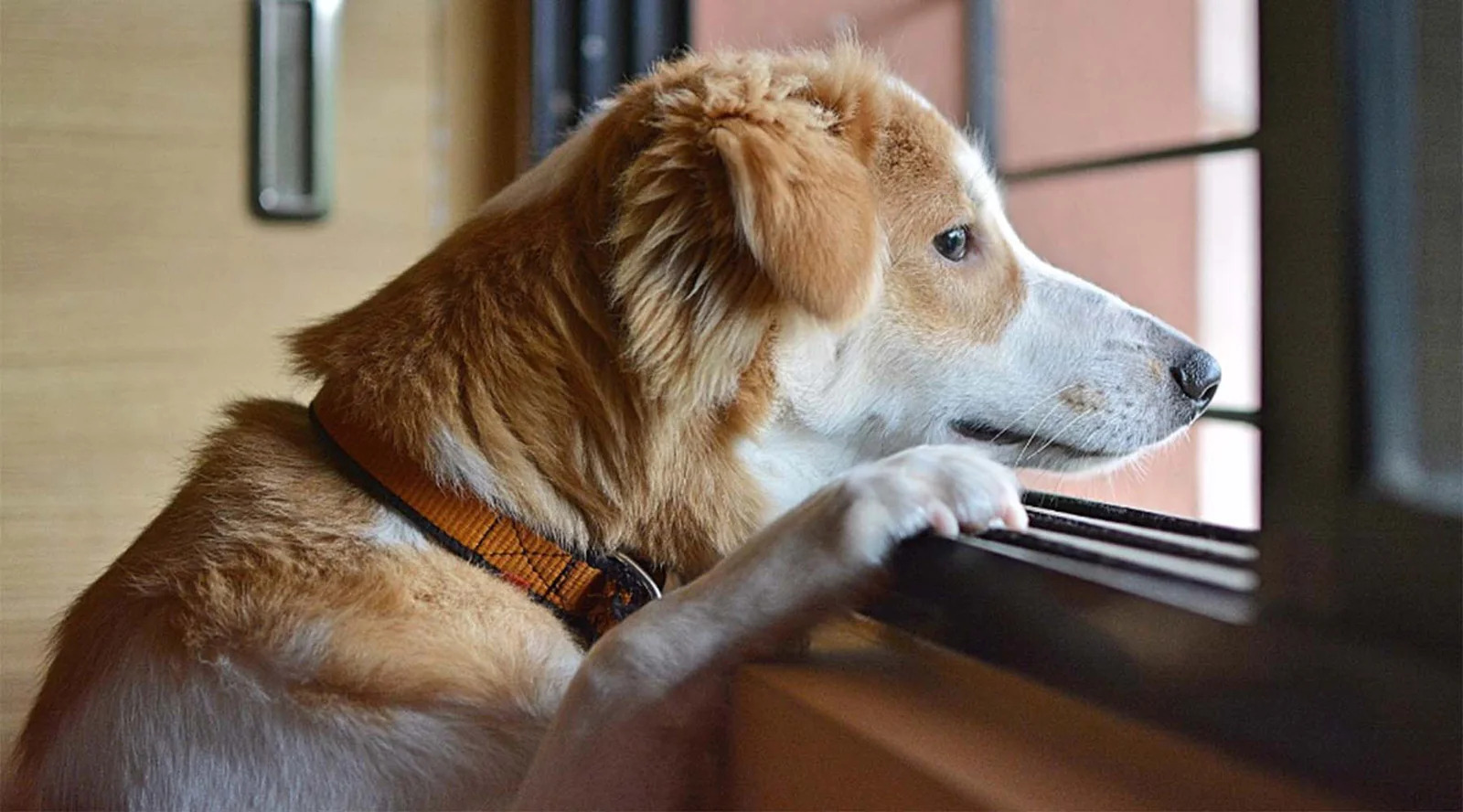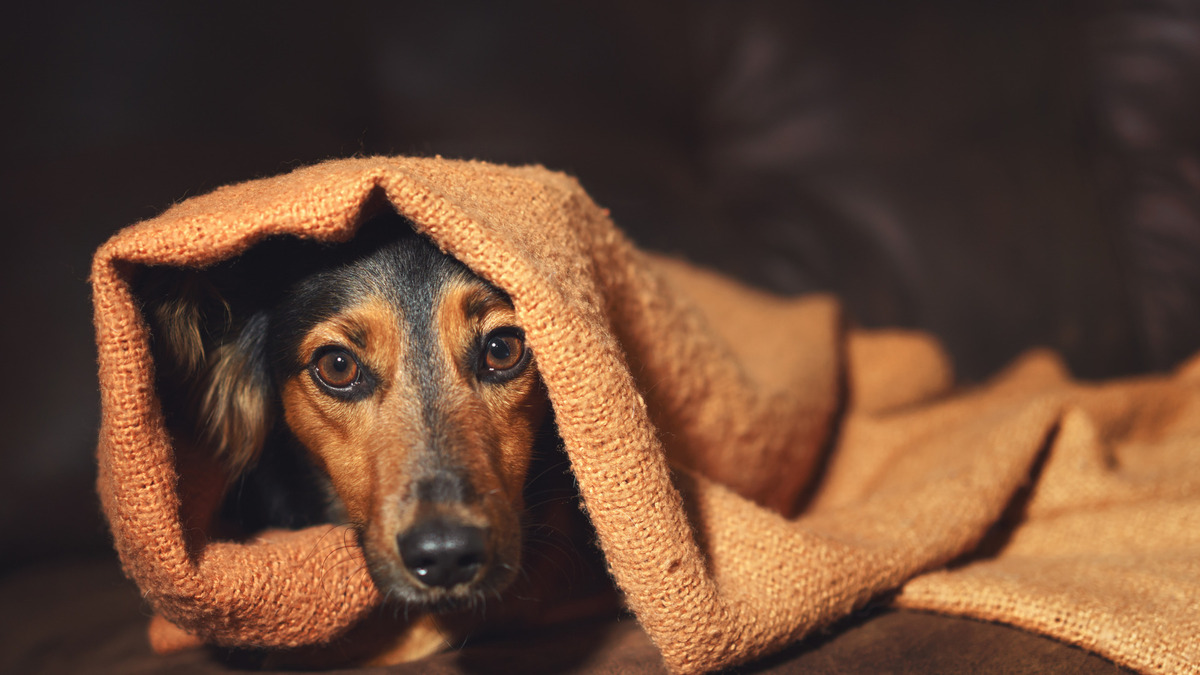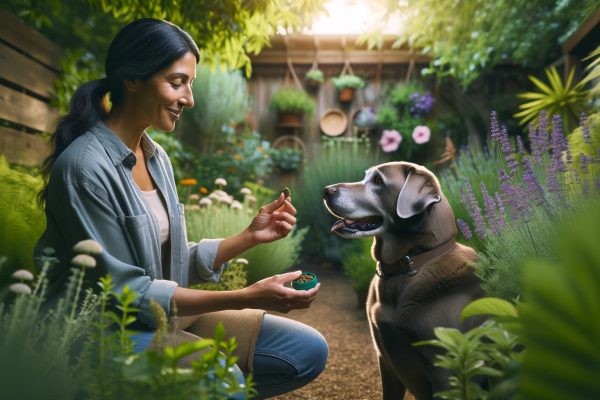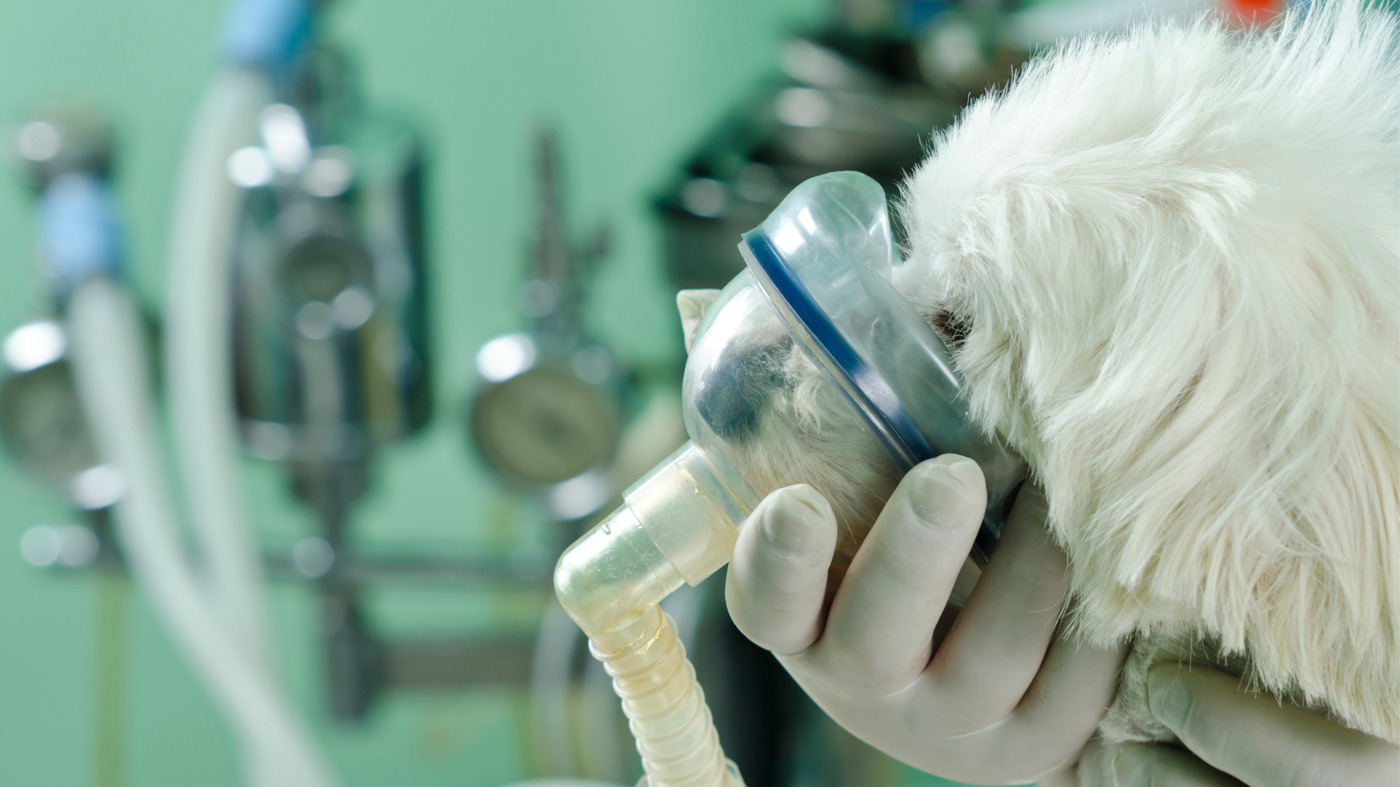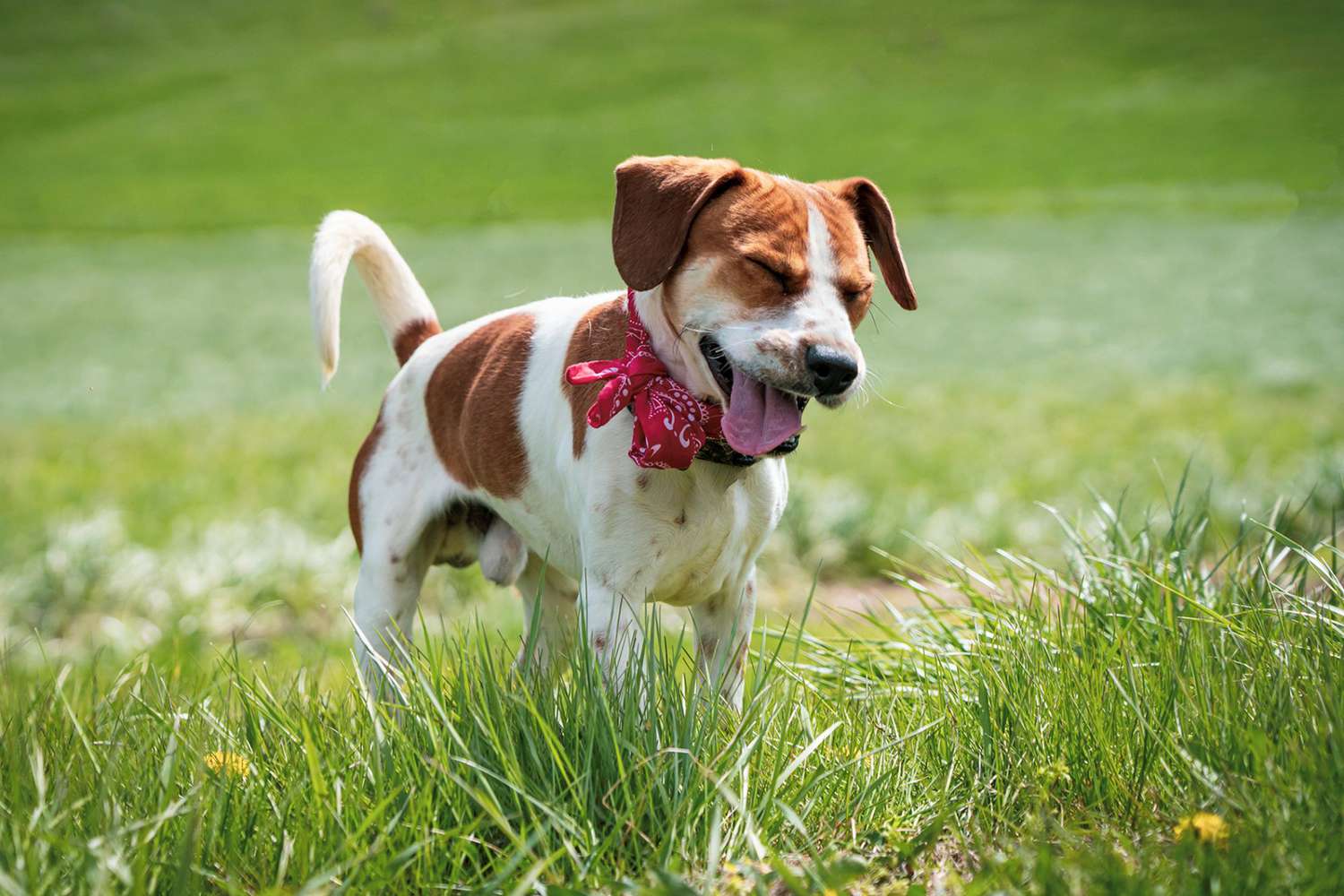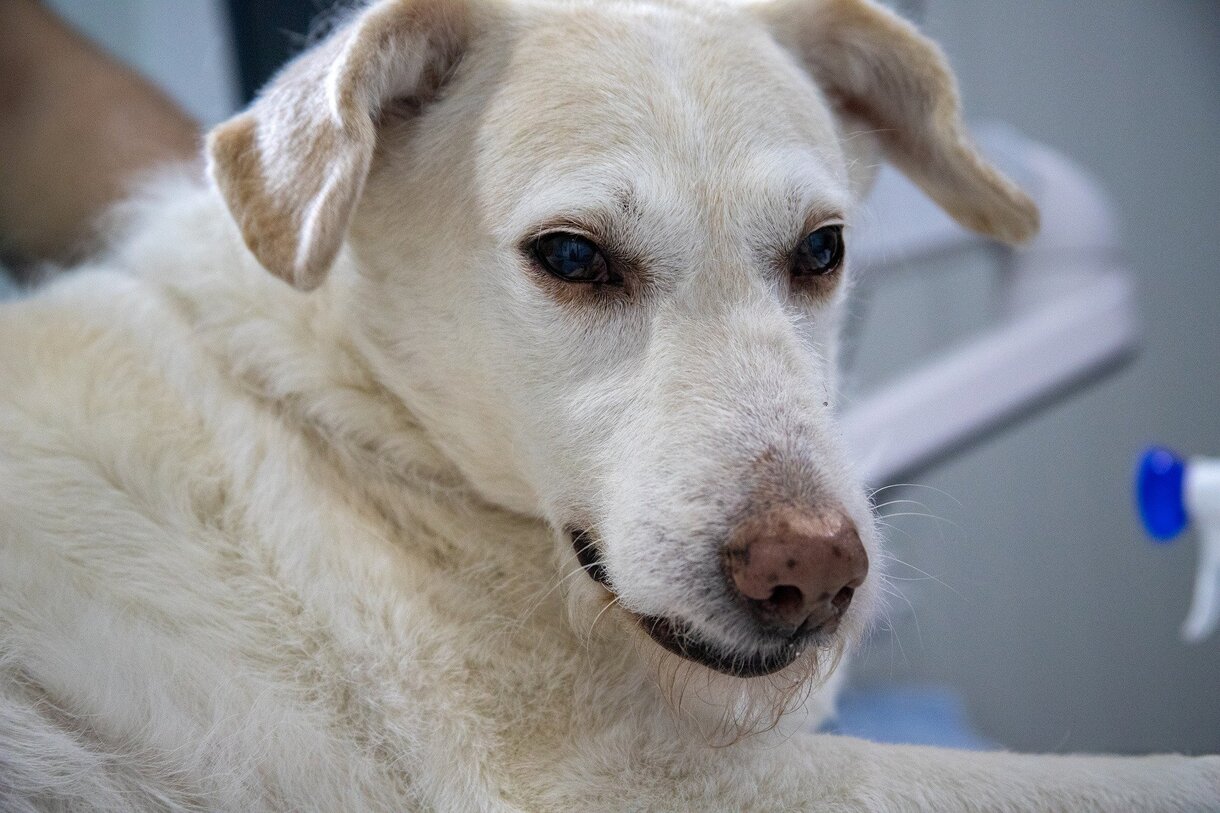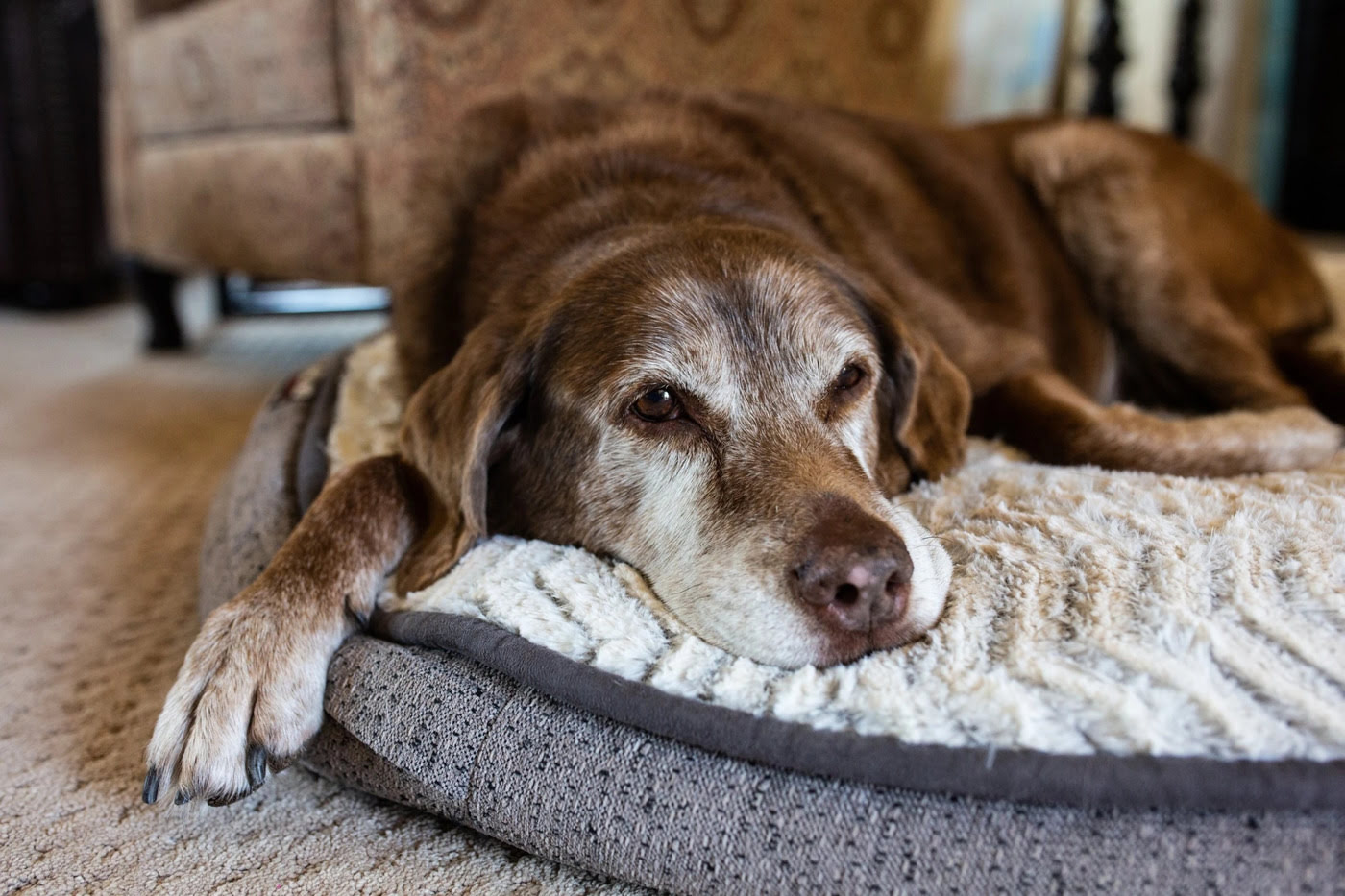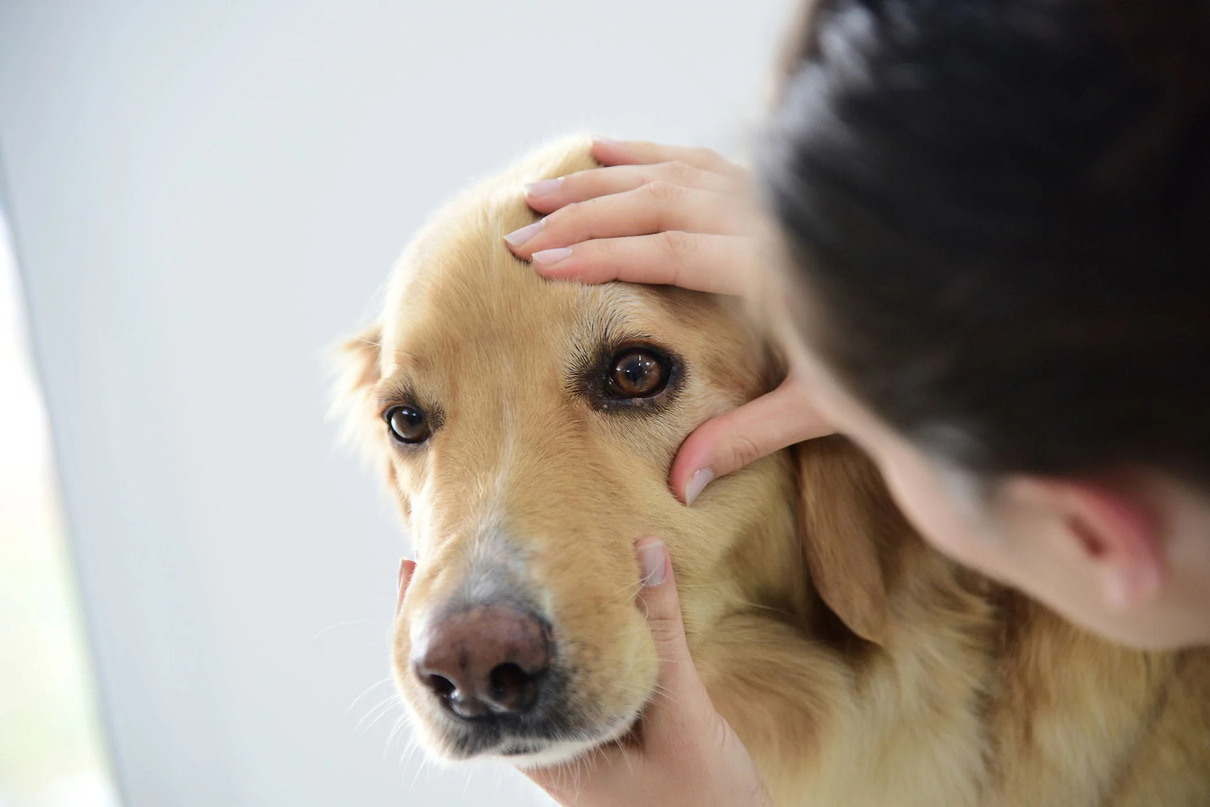Home>Health & Wellness>Behavior & Cognitive Care>How To Help Aggressive Anxiety In Dogs
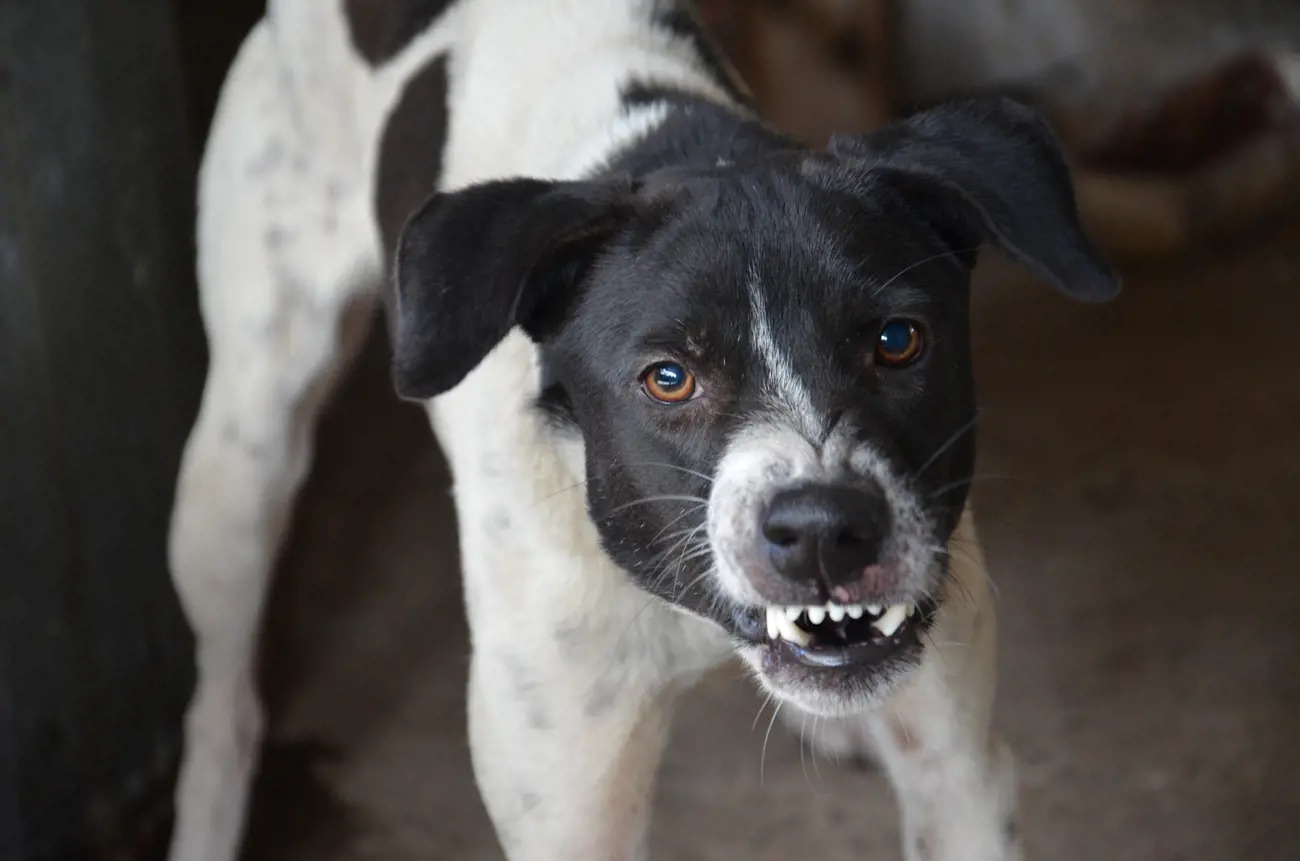

Behavior & Cognitive Care
How To Help Aggressive Anxiety In Dogs
Published: January 30, 2024
Learn effective strategies for managing aggressive anxiety in dogs with behavior and cognitive care techniques. Help your furry friend find peace and balance with expert guidance.
(Many of the links in this article redirect to a specific reviewed product. Your purchase of these products through affiliate links helps to generate commission for Pawsomeoldies.com, at no extra cost. Learn more)
Table of Contents
- Understanding Aggressive Anxiety in Dogs
- Identifying Triggers for Aggressive Anxiety
- Creating a Safe and Calm Environment for Your Dog
- Seeking Professional Help and Training
- Using Medication and Supplements for Aggressive Anxiety
- Implementing Behavior Modification Techniques
- Providing Regular Exercise and Mental Stimulation
- Consistency and Patience in Helping Your Dog
Understanding Aggressive Anxiety in Dogs
Aggressive anxiety in dogs is a complex behavioral issue that can manifest in various ways, such as growling, barking, or even biting. It's crucial for dog owners to recognize the signs of aggressive anxiety to address the underlying causes and provide appropriate support for their furry companions.
Dogs may exhibit aggressive behavior due to fear, stress, or past traumatic experiences. Aggressive anxiety can stem from a range of triggers, including unfamiliar environments, loud noises, or perceived threats. Understanding the root cause of your dog's aggressive anxiety is the first step in helping them overcome this challenging issue.
It's important to note that aggressive anxiety in dogs is not a result of inherent viciousness, but rather a response to perceived threats or stressors. By recognizing this, dog owners can approach the issue with empathy and patience, creating a supportive environment for their pets.
In some cases, aggressive anxiety may be linked to a lack of socialization or previous negative interactions with other animals or humans. This can lead to heightened fear responses and defensive behaviors in certain situations. Understanding your dog's past experiences and socialization history can provide valuable insights into their aggressive anxiety.
Furthermore, it's essential to differentiate between aggressive anxiety and other forms of aggression in dogs. While aggressive anxiety is often rooted in fear or stress, other types of aggression, such as dominance-related aggression, have distinct underlying causes and require tailored approaches for resolution.
By gaining a deeper understanding of aggressive anxiety in dogs, pet owners can approach the issue with empathy and a proactive mindset. This understanding lays the foundation for implementing effective strategies to help dogs overcome their aggressive anxiety and lead happier, more balanced lives.
Read more: How To Help Dogs With Anxiety At Night
Identifying Triggers for Aggressive Anxiety
Identifying the triggers for aggressive anxiety in dogs is a crucial step in addressing and managing this challenging behavioral issue. Dogs may exhibit aggressive behavior in response to specific triggers, and recognizing these stimuli is essential for implementing targeted interventions and creating a supportive environment for your pet.
One common trigger for aggressive anxiety in dogs is fear of unfamiliar or threatening stimuli. This can include encounters with unfamiliar animals, loud noises, or sudden movements. Dogs experiencing aggressive anxiety may perceive these stimuli as potential threats, triggering defensive responses such as growling or barking. By identifying these specific triggers, pet owners can take proactive measures to minimize their impact and help their dogs feel more secure in such situations.
Additionally, past traumatic experiences can serve as potent triggers for aggressive anxiety in dogs. Dogs that have undergone abuse, neglect, or traumatic events in their past may exhibit heightened anxiety and fear-based aggression. Understanding your dog's history and any potential traumatic experiences can provide valuable insights into the triggers for their aggressive behavior, allowing you to approach their care with empathy and tailored support.
Socialization plays a significant role in identifying triggers for aggressive anxiety. Dogs that have not been adequately socialized or have had negative interactions with other animals or humans may develop heightened fear responses, leading to aggressive behavior in certain social situations. By recognizing the impact of socialization on your dog's behavior, you can take steps to gradually expose them to positive social experiences and reduce the triggers for their aggressive anxiety.
Furthermore, physical discomfort or pain can serve as triggers for aggressive anxiety in dogs. Underlying health issues, injuries, or chronic pain can contribute to heightened stress and anxiety, leading to defensive or aggressive behaviors. Identifying any potential sources of physical discomfort in your dog is essential for addressing their aggressive anxiety holistically and ensuring their overall well-being.
By identifying the triggers for aggressive anxiety in dogs, pet owners can gain valuable insights into their pets' behavioral patterns and emotional responses. This understanding forms the basis for implementing targeted interventions, creating a safe and supportive environment, and working towards helping dogs overcome their aggressive anxiety in a compassionate and effective manner.
Creating a Safe and Calm Environment for Your Dog
Creating a safe and calm environment for your dog is essential in addressing and managing aggressive anxiety. A supportive and tranquil setting can significantly impact your dog's emotional well-being and help alleviate their stress and fear-based behaviors. Here are several strategies to foster a safe and calm environment for your furry companion:
-
Establishing a Safe Space: Designate a quiet and comfortable area in your home where your dog can retreat when feeling anxious or overwhelmed. This space should be equipped with cozy bedding, familiar toys, and access to water. By providing a dedicated safe space, you offer your dog a refuge where they can feel secure and relaxed during times of heightened anxiety.
-
Minimizing Exposure to Triggers: Identify specific triggers that provoke your dog's aggressive anxiety and take measures to minimize their exposure to these stimuli. Whether it's loud noises, unfamiliar visitors, or certain environments, creating boundaries and minimizing exposure to triggering situations can help reduce your dog's stress levels and promote a sense of safety.
-
Consistent Routine and Predictability: Dogs thrive on routine and predictability, as it provides them with a sense of security and stability. Establish a consistent daily routine for feeding, exercise, and rest, and strive to maintain a predictable environment for your dog. Predictability can help alleviate anxiety and create a calming atmosphere for your pet.
-
Positive Reinforcement and Comforting Signals: Utilize positive reinforcement techniques to encourage calm and relaxed behavior in your dog. Rewarding moments of tranquility and offering comforting signals, such as gentle petting and soothing words, can reinforce a sense of security and calmness in your dog, helping them cope with their anxiety more effectively.
-
Environmental Enrichment: Enrich your dog's environment with mentally stimulating activities, such as puzzle toys, interactive games, and sensory experiences. Mental stimulation can divert your dog's focus from anxiety-inducing stimuli and promote a sense of engagement and fulfillment, contributing to a calmer overall demeanor.
-
Maintaining a Calm Demeanor: Dogs are highly attuned to their owners' emotional states, and maintaining a calm and composed demeanor can have a reassuring effect on your pet. During times of heightened anxiety, projecting a sense of calmness and reassurance can help your dog feel more secure and supported.
By implementing these strategies and creating a safe and calm environment for your dog, you can play a pivotal role in mitigating their aggressive anxiety and fostering a sense of emotional well-being. A supportive and tranquil environment can empower your dog to navigate their anxiety more effectively and lead a happier, more balanced life.
Seeking Professional Help and Training
Seeking professional help and training is a crucial step in addressing and managing aggressive anxiety in dogs. While pet owners play a significant role in creating a supportive environment for their furry companions, the expertise of professionals can provide invaluable guidance and specialized interventions to address complex behavioral issues.
When dealing with aggressive anxiety in dogs, consulting a qualified veterinarian is essential. A thorough physical examination can help identify any underlying health issues or pain-related conditions that may contribute to your dog's anxiety and aggressive behaviors. Additionally, veterinarians can offer insights into potential medical interventions, such as medication or supplements, to alleviate your dog's anxiety and improve their overall well-being.
In cases where aggressive anxiety is deeply ingrained or poses significant challenges, seeking the expertise of a certified dog behaviorist or trainer is highly beneficial. These professionals possess in-depth knowledge of canine behavior and psychology, allowing them to assess your dog's specific triggers and develop tailored behavior modification plans. Through structured training and behavior modification techniques, dog behaviorists can help desensitize dogs to anxiety-inducing stimuli and teach alternative coping mechanisms, fostering positive behavioral changes over time.
Furthermore, enrolling your dog in obedience classes or specialized anxiety management programs can provide structured environments for learning and socialization. These programs offer opportunities for dogs to interact with other animals and humans in a controlled setting, gradually building confidence and reducing anxiety triggers under the guidance of experienced trainers.
It's important to emphasize that seeking professional help and training is not a sign of failure as a pet owner, but rather a proactive and responsible approach to addressing your dog's well-being. Professionals in the field of veterinary medicine and dog behavior are equipped with the knowledge and skills to support both dogs and their owners in navigating the complexities of aggressive anxiety.
By seeking professional help and training, pet owners demonstrate their commitment to understanding and addressing their dog's aggressive anxiety in a comprehensive and effective manner. Collaborating with professionals can empower pet owners with the tools and strategies needed to support their dogs' emotional well-being and enhance their quality of life.
Using Medication and Supplements for Aggressive Anxiety
In some cases, addressing aggressive anxiety in dogs may necessitate the use of medication and supplements to complement behavioral interventions and create a holistic approach to managing this complex issue. When implemented under the guidance of a qualified veterinarian, medication and supplements can play a valuable role in alleviating the symptoms of aggressive anxiety and supporting the overall well-being of affected dogs.
Medication options for aggressive anxiety may include anti-anxiety medications or antidepressants, which can help regulate neurotransmitter levels in the brain and reduce the intensity of fear-based responses. These medications are prescribed based on a thorough assessment of the dog's specific needs and may be used in conjunction with behavior modification techniques to facilitate a more balanced emotional state. It's essential for pet owners to adhere to the prescribed dosage and schedule while closely monitoring their dog for any potential side effects or changes in behavior.
Additionally, supplements such as calming pheromones, herbal remedies, or nutritional supplements can offer natural support for dogs experiencing aggressive anxiety. Calming pheromone diffusers or sprays emit synthetic pheromones that mimic those produced by nursing mother dogs, promoting a sense of security and relaxation in anxious dogs. Herbal remedies like chamomile or valerian root may have calming properties, while nutritional supplements containing ingredients such as L-theanine or melatonin can support stress reduction and relaxation.
Before initiating any medication or supplement regimen, it's imperative for pet owners to consult with a veterinarian to determine the most suitable options for their dog's individual needs. A thorough evaluation of the dog's health, behavior, and potential underlying causes of aggressive anxiety is essential in guiding the selection of appropriate medications or supplements. Furthermore, ongoing communication with the veterinarian is crucial to monitor the dog's response to the treatment and make any necessary adjustments to the regimen.
It's important to approach the use of medication and supplements for aggressive anxiety as part of a comprehensive care plan that encompasses behavioral interventions, environmental management, and professional guidance. While these interventions can offer valuable support, they should be integrated into a holistic approach aimed at addressing the underlying causes of aggressive anxiety and promoting long-term emotional well-being for affected dogs.
By incorporating medication and supplements as part of a multifaceted approach to managing aggressive anxiety, pet owners can provide their dogs with comprehensive support tailored to their individual needs. When used judiciously and in conjunction with behavioral strategies, medication and supplements can contribute to a more balanced and comfortable life for dogs struggling with aggressive anxiety.
Read more: How To Help Your Dog With Storm Anxiety
Implementing Behavior Modification Techniques
Implementing behavior modification techniques is a fundamental aspect of addressing and managing aggressive anxiety in dogs. These techniques are designed to reshape your dog's responses to anxiety-inducing stimuli, promote positive behavioral changes, and enhance their overall emotional well-being. By incorporating structured and consistent behavior modification strategies, pet owners can play a pivotal role in helping their dogs navigate their aggressive anxiety in a supportive and effective manner.
One of the key behavior modification techniques for addressing aggressive anxiety is desensitization. This process involves gradually exposing your dog to anxiety triggers in a controlled and systematic manner, allowing them to acclimate to these stimuli without experiencing heightened fear or stress. By incrementally introducing triggering stimuli at a level that does not elicit an aggressive response and pairing it with positive reinforcement, such as treats or praise, dogs can learn to associate these stimuli with positive experiences, gradually reducing their anxiety response over time.
Counterconditioning is another valuable behavior modification technique that can aid in addressing aggressive anxiety. This approach involves changing your dog's emotional response to anxiety triggers by associating them with positive experiences. For instance, if your dog exhibits aggressive anxiety in the presence of unfamiliar visitors, you can use counterconditioning to create positive associations by rewarding calm and non-aggressive behavior when guests are around. Over time, this can help your dog reframe their perception of these triggers and respond in a more relaxed manner.
Furthermore, implementing management techniques can complement behavior modification efforts by minimizing your dog's exposure to anxiety triggers while they undergo training. This may involve creating physical barriers or using tools such as leashes or muzzles to prevent situations that could provoke aggressive anxiety. By managing your dog's environment and interactions, you can reduce the likelihood of triggering situations and provide a sense of safety and predictability for your pet.
Consistency and patience are essential when implementing behavior modification techniques. It's important to maintain a structured training schedule, adhere to positive reinforcement principles, and remain patient throughout the process. Behavioral changes take time, and consistent application of these techniques is crucial for fostering lasting improvements in your dog's response to aggressive anxiety triggers.
By implementing behavior modification techniques with dedication and empathy, pet owners can empower their dogs to develop healthier coping mechanisms and reduce the impact of aggressive anxiety on their daily lives. These techniques, when applied thoughtfully and consistently, can contribute to a more positive and harmonious relationship between dogs and their owners, fostering a sense of security and emotional well-being for the canine companions.
Providing Regular Exercise and Mental Stimulation
Regular exercise and mental stimulation are integral components of a comprehensive approach to addressing aggressive anxiety in dogs. Physical activity and cognitive engagement play a crucial role in promoting overall well-being, reducing stress, and channeling excess energy, all of which can contribute to mitigating the symptoms of aggressive anxiety.
Engaging in regular exercise routines tailored to your dog's breed, age, and physical abilities is essential for promoting physical fitness and mental relaxation. Physical activity not only helps release pent-up energy but also stimulates the production of endorphins, which are natural mood enhancers. Whether it's brisk walks, interactive play sessions, or agility training, incorporating regular exercise into your dog's routine can have a positive impact on their emotional state and help alleviate anxiety-related behaviors.
In addition to physical exercise, mental stimulation is equally vital for dogs struggling with aggressive anxiety. Engaging your dog in mentally stimulating activities, such as puzzle toys, scent games, or obedience training, can provide valuable outlets for mental energy and promote cognitive engagement. Mental stimulation not only helps prevent boredom and destructive behaviors but also fosters a sense of accomplishment and confidence in dogs, contributing to a more balanced emotional state.
Furthermore, interactive play sessions that incorporate mental challenges, such as hide-and-seek games or treat-dispensing toys, can offer opportunities for dogs to exercise their problem-solving skills and cognitive abilities. These activities not only provide mental stimulation but also strengthen the bond between dogs and their owners, creating a supportive and enriching environment that can help alleviate anxiety-related behaviors.
It's important to note that the frequency and intensity of exercise and mental stimulation should be tailored to your dog's individual needs and preferences. Observing your dog's responses to different activities and adjusting the routines accordingly can help ensure that they derive maximum benefit from these engagements.
By providing regular exercise and mental stimulation, pet owners can contribute to their dogs' emotional well-being and provide constructive outlets for managing aggressive anxiety. These activities not only promote physical fitness and mental alertness but also offer opportunities for bonding and positive reinforcement, creating a nurturing environment that supports dogs in overcoming their anxiety-related challenges.
Consistency and Patience in Helping Your Dog
Consistency and patience are foundational principles in the journey of helping your dog overcome aggressive anxiety. While addressing this complex behavioral issue, it's essential to recognize that meaningful progress takes time and dedication. Consistency in implementing behavioral interventions, environmental management, and training techniques is key to fostering lasting changes in your dog's responses to anxiety triggers.
Consistency encompasses adhering to a structured routine for your dog's care, including feeding schedules, exercise regimens, and training sessions. By maintaining a predictable environment, you provide your dog with a sense of security and stability, which can help alleviate anxiety and promote a calmer demeanor. Consistent application of behavior modification techniques, such as desensitization and counterconditioning, reinforces positive behavioral changes and helps your dog reframe their responses to anxiety-inducing stimuli over time.
Patience is equally crucial, as dogs require time to adapt to new behaviors and coping mechanisms. It's essential to approach the process with empathy and understanding, acknowledging that behavioral changes do not occur overnight. Patience allows you to support your dog through moments of anxiety and fear, offering reassurance and comfort as they navigate their emotional challenges. By remaining patient, you create a supportive environment where your dog feels safe to explore new ways of responding to triggers and gradually build confidence.
Consistency and patience go hand in hand, forming the bedrock of a nurturing and effective approach to helping your dog overcome aggressive anxiety. Consistently applying behavior modification techniques and environmental management strategies while exercising patience allows you to observe gradual improvements in your dog's responses and emotional well-being. It's a journey that requires unwavering commitment and a deep understanding of your dog's individual needs and triggers.
In the process of supporting your dog, it's important to celebrate small victories and progress, recognizing the incremental steps toward a more balanced and relaxed state. Consistency and patience empower you to be a steadfast source of support for your dog, fostering a trusting and resilient bond that forms the cornerstone of their journey toward emotional well-being.
By embracing consistency and patience as guiding principles, you embark on a transformative path that not only helps your dog navigate their aggressive anxiety but also strengthens the enduring bond between you and your beloved canine companion.
